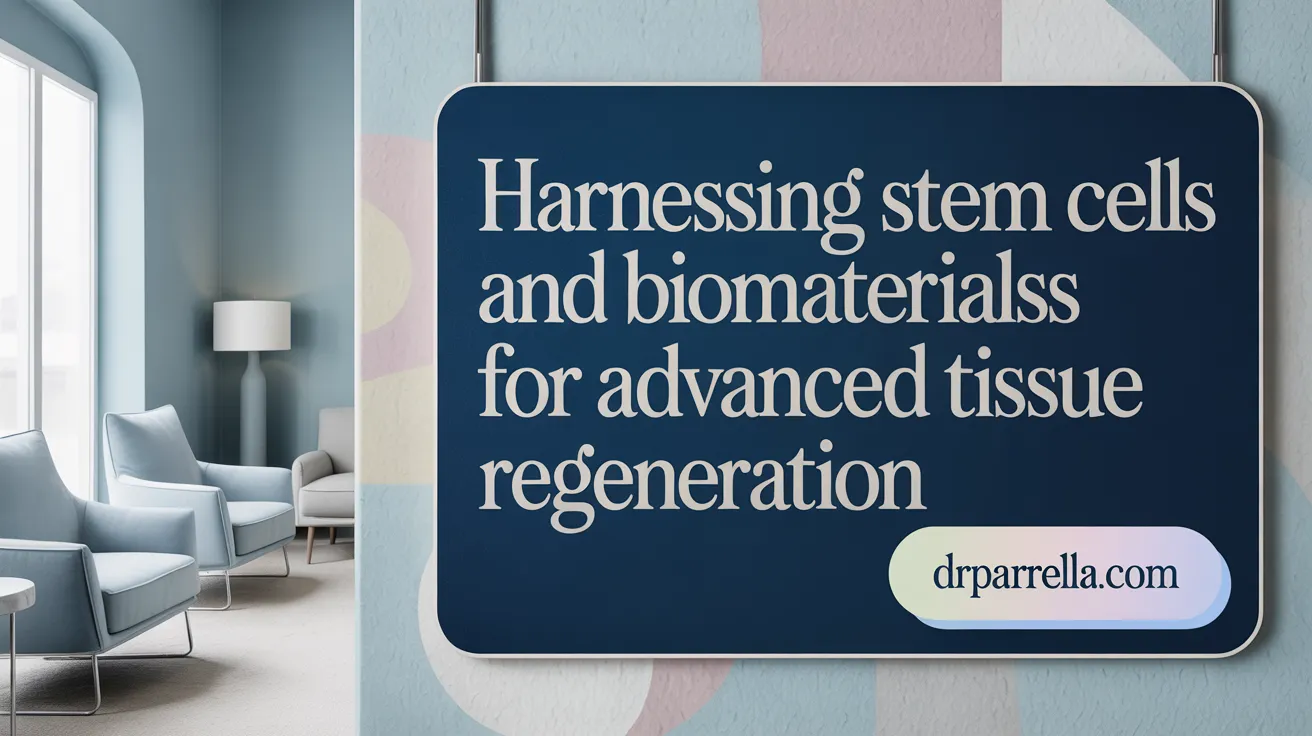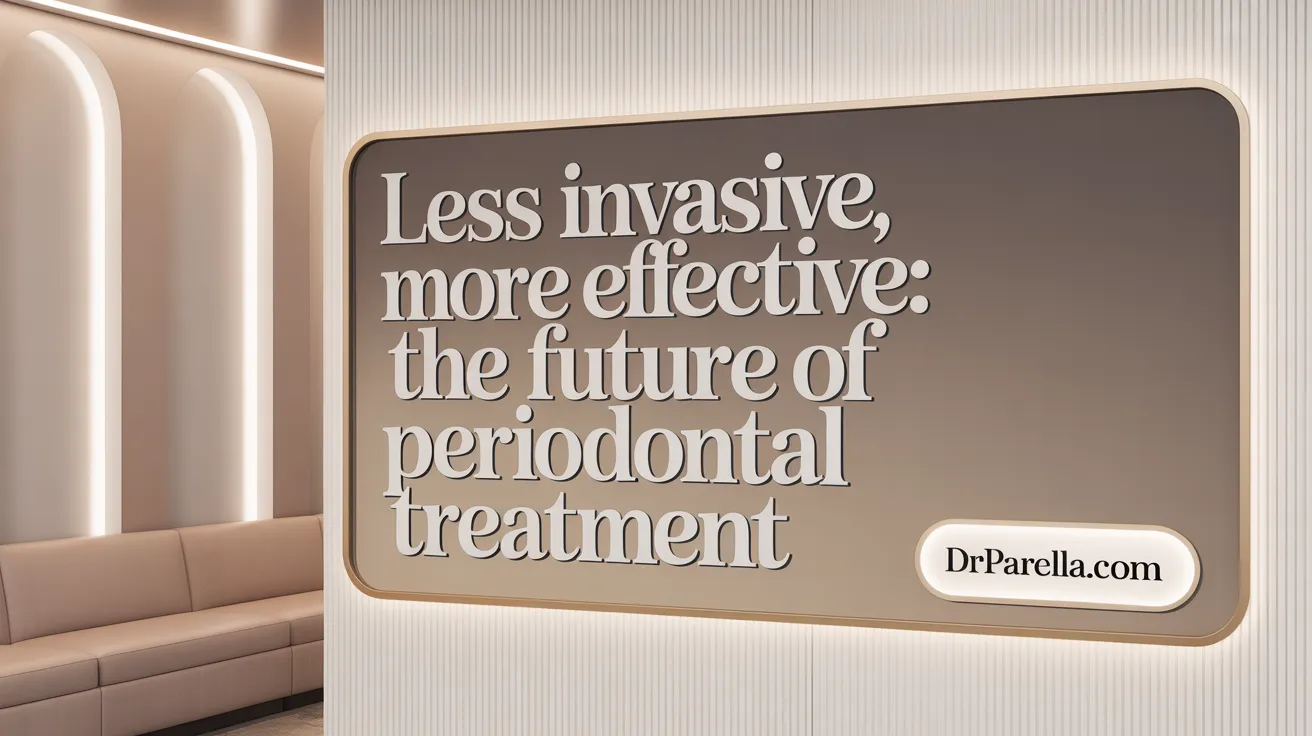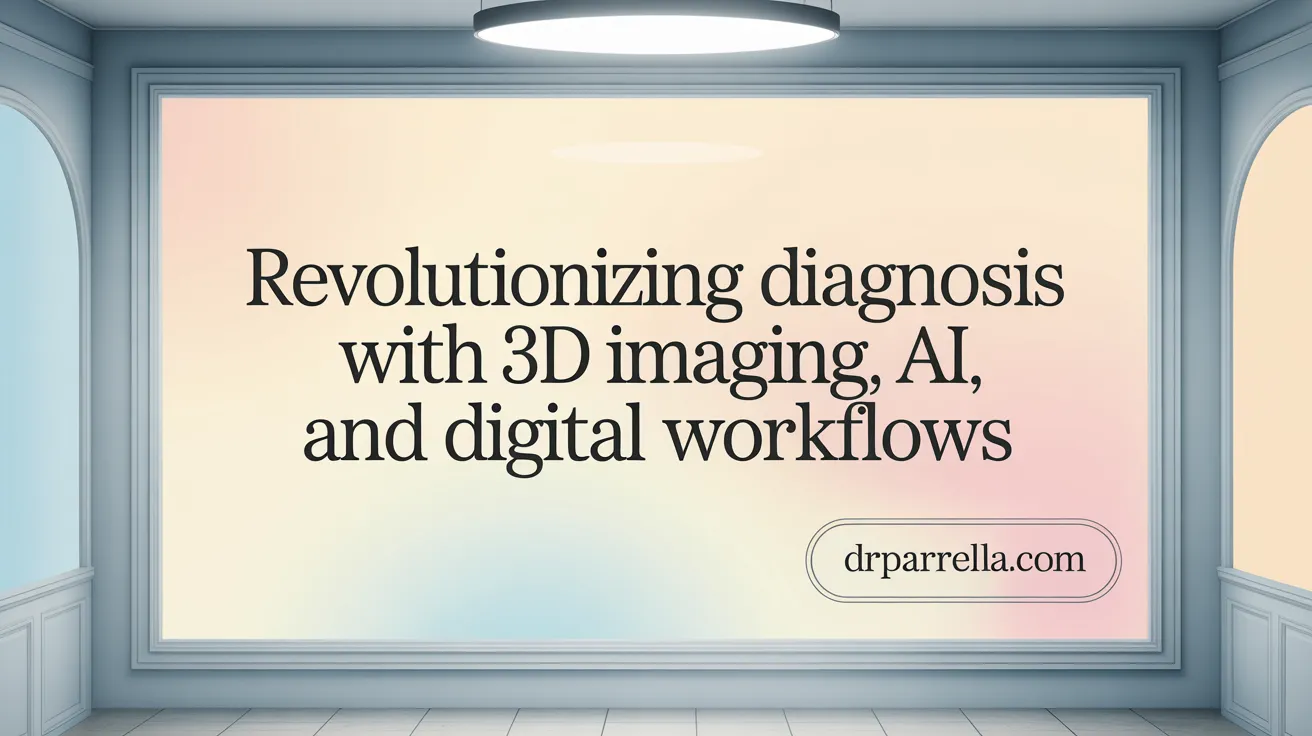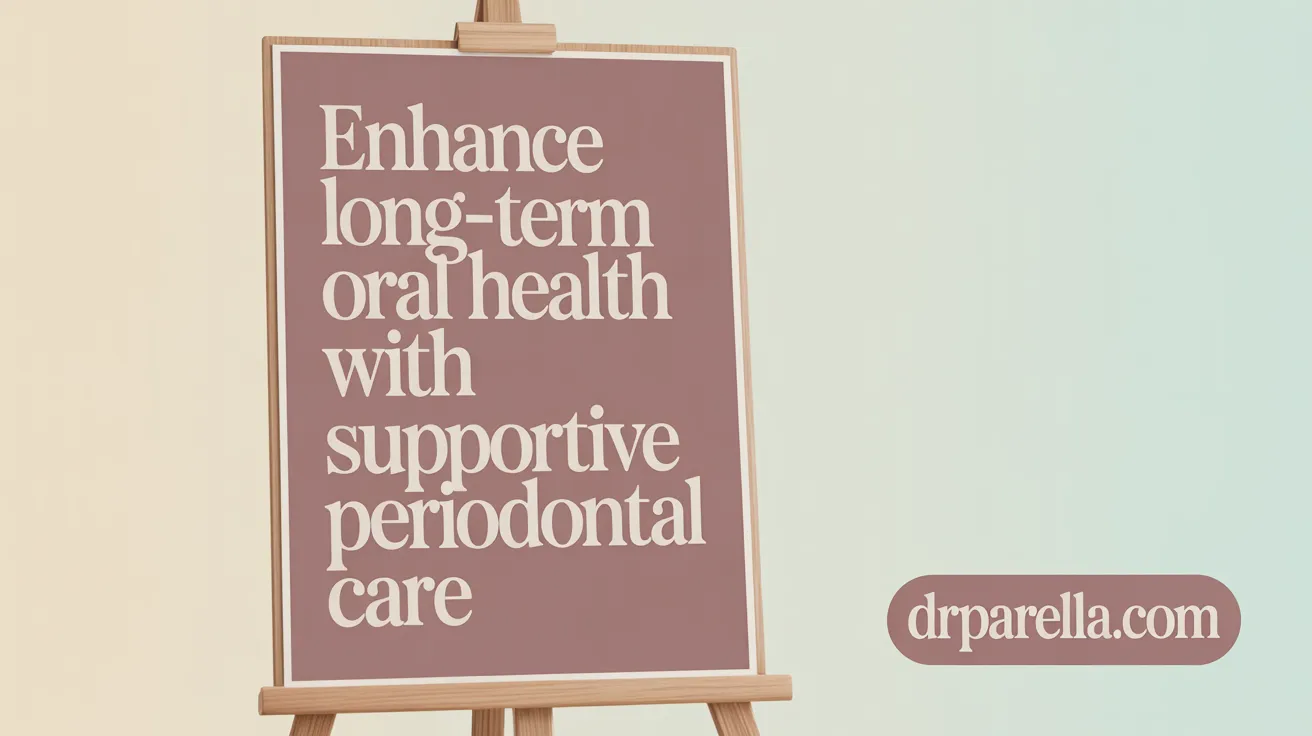Introduction to Modern Advances in Periodontal Care
Periodontal disease affects millions globally, threatening oral and systemic health through progressive destruction of the gums and supporting bone. Recent scientific and technological advances in periodontal therapy have moved beyond traditional treatments toward innovative, less invasive, and regenerative approaches that restore damaged tissues, improve disease management, and enhance patient outcomes. This article explores cutting-edge therapies, diagnostic tools, and future directions reshaping the landscape of periodontal care.
Stem Cell Therapy and Regenerative Treatments: Unlocking Tissue Recovery

How are stem cells used in periodontal regeneration?
Stem cells, especially Mesenchymal Stem Cells (MSCs) in Periodontium, play a pivotal role in regenerating damaged periodontal tissues. These multipotent cells can differentiate into essential components such as alveolar bone osteoblasts, periodontal ligament (PDL) fibroblasts, and cementoblasts, which form cementum. Beyond differentiation, MSCs secrete growth factors like vascular endothelial growth factor (VEGF), fibroblast growth factor (FGF), and transforming growth factor-beta (TGF-β). These factors stimulate new blood vessel formation, cell proliferation, and accelerate tissue healing, creating an environment ideal for regeneration. Clinical trials have shown promising safety and efficacy, with ongoing research exploring gene-edited and patient-specific cell therapies to enhance outcomes.
What role do biomaterials and scaffolds play in advanced periodontal therapy?
Biomaterials and scaffolds provide the physical framework required for tissue repair and regeneration. Materials such as Bioactive Glass in Bone Growth, collagen matrices, and specially designed 3D-Printed Scaffolds support cell attachment and guide new tissue growth. These structures gradually resorb, allowing natural tissue to fully replace them. Innovative Smart Injectable Hydrogels based on natural polymers like chitosan or alginate offer minimally invasive delivery of stem cells and growth factors directly into periodontal defects. They provide controlled, localized release of therapeutic agents and adapt to the shape of the defect, reducing patient discomfort while maximizing regeneration.
Mechanisms of tissue healing and growth factor secretion
Stem cells contribute to periodontal repair not only by forming new tissue but also by modulating the immune response. MSCs can suppress inflammation by inducing regulatory T-cells and recruiting beneficial immune cells. Additionally, stem cells release Extracellular Vesicles in Stem Cell Communication loaded with microRNAs and proteins that influence gene expression in surrounding cells, further promoting regeneration and healing.
Clinical applications and future prospects of stem cell therapies
Current clinical applications focus on treating periodontitis-related bone and soft tissue loss using MSCs combined with biomaterials. Early-stage trials report improvements in clinical attachment levels, pocket depth reduction, and bone regeneration. Future prospects include gene-edited stem cells designed to enhance regenerative capacity and immune modulation, alongside personalized therapies tailored to individual genetic profiles and microbial environments.
Advantages and challenges of regenerative approaches
Regenerative therapies promise to restore natural periodontal structures, improving function and aesthetics beyond symptom management. Advantages include minimally invasive delivery, reduced reliance on traditional surgery, and potential for full tissue recovery. However, challenges remain, such as ensuring consistent stem cell quality, standardizing protocols, long-term safety, and translating promising animal model results to humans. Ethical considerations and regulatory compliance also guide clinical adoption.
| Topic | Summary | Details |
|---|---|---|
| Stem Cell Types | Mainly MSCs, plus ESCs, HSCs, and iPSCs | MSCs differentiate into bone, ligament, cementum cells |
| Growth Factors & Healing Mechanisms | VEGF, FGF, TGF-β secreted by stem cells | Stimulate angiogenesis, cell proliferation, immunomodulation |
| Biomaterials & Scaffolds | Bioactive glass, collagen, 3D-printed & injectable hydrogels | Provide structure, controlled release, minimally invasive delivery |
| Clinical Progress | Promising safety, efficacy in trials | Early improvements in attachment & bone regeneration observed |
| Challenges & Future Directions | Standardization, long-term effects, gene-editing, personalized medicine | Ongoing research for optimized, tailored regenerative protocols |
Minimally Invasive Technologies: Lasers, Photodynamic Therapy, and Advanced Surgery

What are the benefits and applications of laser-assisted periodontal therapy?
Laser-assisted periodontal therapies, including the FDA-cleared LANAP (Laser-Assisted New Attachment Procedure), use precise laser light to target and remove diseased gum tissue while preserving healthy areas. This minimally invasive technique significantly reduces bleeding, swelling, and patient discomfort compared to traditional surgery. It encourages faster healing and regeneration by stimulating new bone and tissue growth. Clinical studies and FDA approval affirm that LANAP is effective for moderate to severe gum disease, providing a less painful alternative with no need for stitches and a shorter recovery time. By eliminating harmful bacteria and preserving vital tissues, laser therapy enhances overall periodontal health (Laser Therapy for Gum Disease, Innovations in Periodontal Treatment).
How does photodynamic therapy work in periodontal treatment?
Photodynamic therapy (PDT) involves applying a photosensitive agent to the infected periodontal pockets, which is then activated by a specific wavelength of light. This activation produces reactive oxygen species that selectively destroy bacteria without harming surrounding tissues. PDT offers targeted bacterial control without using antibiotics, reducing the risks of antibiotic resistance. It is especially beneficial in persistent or refractory periodontal cases. As a minimally invasive adjunctive therapy, PDT supports healing and integrates well with other treatments to improve periodontal outcomes (3D Imaging Technologies in Periodontal Treatment, Laser-assisted periodontal therapy and innovative techniques).
Innovations in microsurgical and flap surgery techniques
Recent advances in periodontal surgery include refined microsurgical approaches that use smaller incisions and enhanced magnification tools, enabling precise removal and regeneration with minimal trauma. Laser-assisted flap surgeries reduce tissue damage and accelerate recovery times compared to conventional methods. These techniques improve clinical outcomes and patient comfort by preserving tissue integrity and reducing postoperative pain (Advanced Periodontal Therapy Options, Laser and regenerative periodontal treatments).
Benefits of less invasive procedures for patient outcomes
Minimally invasive technologies such as lasers and photodynamic therapy offer reduced pain, less bleeding, and quicker recovery, which improve patient satisfaction and compliance. These methods preserve more natural periodontal structures, leading to better long-term tissue regeneration and stability. Together with advanced microsurgical techniques, they represent a shift toward gentler and more effective periodontal care (Advanced Periodontal Therapy Options and Benefits, Innovations in Periodontal Regeneration).
Innovations in Diagnostics and Smart Technologies for Personalized Care

How are 3D imaging and AI enhancing periodontal diagnosis?
Recent advancements in periodontal diagnostics harness 3D Imaging Technologies in Periodontal Treatment and artificial intelligence to revolutionize patient care. Cone beam computed tomography (CBCT) in dentistry offers precise, three-dimensional visualization of oral structures, allowing clinicians to accurately assess bone and soft tissue integrity. This detailed imaging supports personalized treatment planning tailored to the specific anatomy and disease severity of each patient.
Artificial intelligence complements imaging by analyzing complex data sets. Models such as R-CNN Models for Bone Loss Detection scan CBCT and other imaging sources to detect early signs of bone loss and subtle periodontal pathology. This early detection facilitates timely intervention, improving the chances for successful outcomes.
What role do salivary diagnostics and metabolomic profiling play in periodontal care?
Salivary Diagnostics for Periodontal Pathogens introduce a non-invasive and accessible tool for periodontal disease detection and management. By identifying key periodontal pathogens and inflammatory biomarkers in saliva, clinicians can monitor disease activity and response to treatment without invasive procedures.
Metabolomic profiling further enhances this approach by analyzing saliva's molecular composition to distinguish between healthy and diseased states. This advanced screening can identify individuals at high risk, enabling early preventive measures and personalized therapies tailored to their unique biochemical profile.
How do digital workflows like CAD/CAM and intraoral scanning improve periodontal treatment?
Digital workflows incorporate Intraoral Scanning and CAD/CAM in Dentistry to improve precision in diagnosis and treatment execution. These technologies streamline the creation of custom surgical guides, restorations, and prosthetics, ensuring accurate fit and enhanced patient comfort.
What benefits do teledentistry and mobile app integration bring to periodontal care?
Teledentistry in Periodontal Care platforms and mobile health applications are transforming patient engagement and follow-up by facilitating remote monitoring, education, and communication. Patients receive personalized reminders and care instructions, promoting adherence to oral hygiene and maintenance protocols while increasing access to specialist guidance.
These combined technological advances foster a shift toward proactive, personalized periodontal care that optimizes outcomes through accurate diagnostics, tailored interventions, and continuous patient support.
Host Modulation and Pharmacological Advances: Targeting Inflammation and Infection

What are host modulation therapies and how do they aid periodontal treatment?
Host modulation therapies are innovative approaches that focus on controlling the body's inflammatory response rather than directly attacking bacteria. Agents like low-dose doxycycline and omega-3 fatty acids serve this purpose by reducing destructive inflammation in periodontal tissues. By moderating the immune response, these therapies slow disease progression and promote better tissue preservation, leading to improved treatment outcomes.
How are natural compounds and new drug therapies being applied in periodontal care?
Natural compounds including quercetin and lycopene play a growing role as adjunctive treatments in periodontal care due to their anti-inflammatory and antioxidant effects. Quercetin, especially when combined with senolytic drugs like dasatinib, has shown in translational studies with animal models the ability to decrease markers of senescence and periodontal inflammation. Lycopene supplementation, combined with conventional non-surgical therapy, demonstrated enhanced improvements in probing depth and attachment levels in patients.
What role do controlled-release antimicrobial systems have in treatment?
Controlled-release antimicrobial systems provide targeted delivery of antibiotics directly to periodontal pockets, improving bacterial control while minimizing systemic side effects. These systems come in various forms like gels and fibers and steadily release medication over time to maintain effective concentrations at the disease site. For more detailed insights, see Advances in Local Drug Delivery for Periodontal Treatment.
How are probiotics and microbiome-targeting agents advancing periodontal therapy?
Probiotics and microbiome-targeting agents aim to restore balanced oral flora by inhibiting pathogenic bacteria and supporting beneficial microbes. These biological therapies help reduce tissue destruction and promote healing by modulating the complex microbial environment in periodontal pockets, as discussed in Innovations in regenerative therapies including probiotics.
This multifaceted pharmacological approach combining host modulation, natural compounds, controlled antimicrobials, and microbiome therapies presents promising advancements in managing periodontal disease more effectively and safely.
Comprehensive Periodontal Management: Integrating Prevention, Maintenance, and Patient Education

Why is supportive periodontal therapy essential for long-term health?
Supportive periodontal therapy (SPT) plays a vital role in maintaining periodontal health after initial disease treatment. This therapy involves regular professional cleanings and periodontal monitoring to prevent disease recurrence. Research shows that consistent SPT visits significantly decrease the risk of tooth loss, particularly in patients facing risk factors like smoking and diabetes. These findings highlight that customized maintenance schedules are necessary to ensure lasting periodontal stability.
What do deep cleaning procedures such as scaling and root planing involve?
Deep cleaning treatments, including scaling and root planing procedures, are fundamental in removing plaque and calculus beneath the gum line. These procedures reduce inflammation and halt the progression of gum disease by targeting bacterial biofilms that cause tissue destruction. They form the cornerstone of non-surgical care and are often complemented by adjunct therapies for thorough disease management.
What role do risk factors like smoking and diabetes play in periodontal health?
Smoking and diabetes profoundly affect periodontal outcomes. Smoking impairs inflammation resolution by causing vasoconstriction, which inhibits healing after therapy. Diabetes increases susceptibility to severe periodontitis and may negatively impact treatment response. Identifying these risk factors is critical for tailoring therapy and emphasizing the importance of rigorous maintenance regimens to counterbalance their effects (impact of smoking and diabetes on periodontal health).
How does patient education and home care influence treatment outcomes?
Patient education empowers individuals to maintain effective oral hygiene, critical for supporting professional periodontal therapy. Incorporating technological advancements such as smart toothbrushes and mobile health applications helps in monitoring and improving home care routines. Enhanced self-care reduces inflammation, complements clinical treatments, and contributes to long-term disease control.
Why are multifaceted treatment approaches important in periodontal care?
Periodontal disease management benefits from combining various therapies to address the complex biological environment. Integrating deep cleaning, laser-assisted periodontal therapy, host modulation therapies, and innovations in periodontal regeneration maximizes healing potential. A comprehensive approach tailored to individual patient needs fosters improved clinical outcomes and helps maintain oral health over time.
Looking Ahead: The Future of Periodontal Therapy
Advances in periodontal therapy are redefining treatment paradigms by integrating cutting-edge regenerative techniques, minimally invasive technologies, smart diagnostics, and host modulation strategies. These innovations hold the promise of more effective tissue regeneration, personalized care, and improved quality of life for patients with gum disease. Emphasizing prevention and maintenance alongside new therapies will be essential to sustain oral health and reduce systemic risks. As research continues to evolve, dental practices equipped with the latest technologies and a patient-centered approach are poised to deliver transformative periodontal care in the years ahead.
